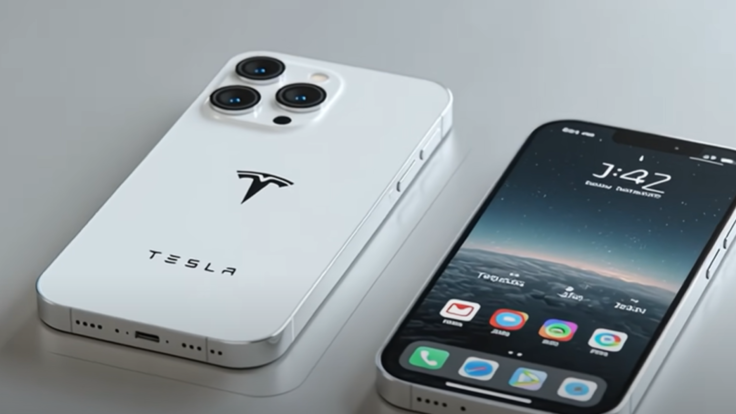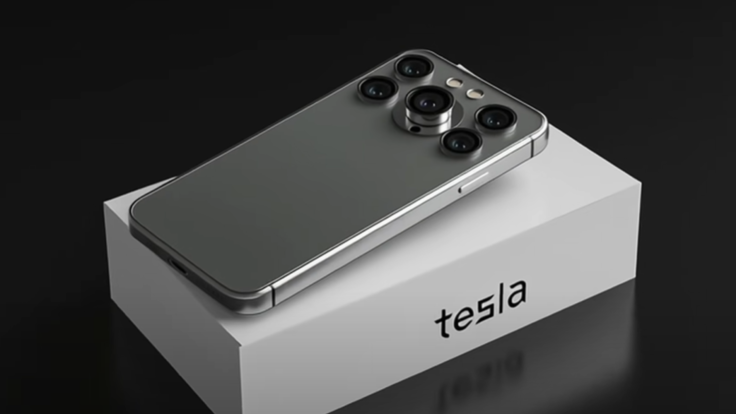Is Tesla Pi Phone Better Than Xiaomi 17 Pro Max? Truth Behind the Viral Tech Rivalry Shocking Fans
Tesla Pi Phone vs. Xiaomi 17 Pro Max: A clash between a revolutionary concept with free internet and a refined flagship with a unique dual-screen design.
In an era where smartphone innovation often feels like a series of small, predictable steps, the rumour mill occasionally churns out concepts that promise a giant leap. Two such devices are currently capturing the imagination of the tech world, each offering a radically different vision for the future of mobile technology.
On one side, we have the hypothetical Tesla Pi Phone, a device that aims to revolutionise connectivity and ecosystem integration. On the other, the rumoured Xiaomi 17 Pro Max, which seeks to perfect the current flagship formula with a unique and practical design twist. This isn't just a comparison of specifications; it's a clash of philosophies.
A Foldable Future or a Second Glance? Design Philosophies of the Tesla Pi Phone and Xiaomi 17 Pro Max
The most immediate difference between these two contenders lies in their physical form. The Tesla Pi Phone is imagined as a true next-generation device, featuring a foldable design with a 'flex hinge' engineered to eliminate the dreaded crease.
This would allow it to transform from a standard phone into an expansive 8.0-inch tablet, boasting a Dynamic AMOLED 2X display with a dazzling peak brightness of 3,200 nits.
In contrast, the Xiaomi 17 Pro Max, while more conventional, is far from boring. It reportedly maintains a standard flagship design but cleverly integrates a 2.9-inch secondary display on its rear.
This isn't just for show; it's a functional addition for displaying notifications, customised backgrounds, and, most cleverly, for allowing users to take high-quality selfies using the main camera array. It's an evolutionary step, refining a familiar form factor rather than completely reinventing it.
Beyond the Handset: Ecosystem Wars with the Tesla Pi Phone and Xiaomi 17 Pro Max
Here, the conceptual gap between the two devices widens into a chasm. The Tesla Pi Phone's entire premise is built on deep, seamless integration with the wider Tesla ecosystem. It's rumoured to run on a new, privacy-focused operating system called XOS, built on Linux to be free of advertisements and data harvesting.
Connectivity would be its killer feature, with integrated Starlink providing free global internet access. The virtual assistant, 'Grok', would extend its control beyond the phone to Tesla vehicles, solar roofs, and Powerwalls, making it a central hub for a user's entire technological life.
The Xiaomi 17 Pro Max operates within the more familiar, yet robust, confines of Android and the extensive Xiaomi ecosystem. While it promises seamless integration with a vast suite of Xiaomi products, its approach is less revolutionary.
It relies on a customised version of Android, offering a powerful but known experience. The rumours of satellite connectivity for calls and texts show an ambition to push boundaries, but it falls short of the all-encompassing, free global internet proposed by the Tesla Pi Phone.
Powering the Future: Unpacking the Batteries of the Tesla Pi Phone and Xiaomi 17 Pro Max
A phone's ambition is nothing without the power to back it up. The Xiaomi 17 Pro Max is rumoured to house a colossal 7,500mAh battery, a figure that dwarfs most of its competitors. However, early reports suggest that its real-world performance might be less impressive than its sheer size implies, a crucial detail for power users.
The Tesla Pi Phone, meanwhile, aims for endurance through innovation. With a rumoured battery capacity between 6,499 and 6,897 mAh, it supposedly leverages new aluminum-ion technology. This, combined with its bespoke operating system, is claimed to deliver up to three days of use and support exceptionally fast charging.
The choice is between raw capacity and technological efficiency, a battle that could define the user experience for both devices. Ultimately, the 'better' phone depends entirely on what you value: the revolutionary, privacy-first, all-in-one vision of the Tesla Pi Phone, or the refined, feature-rich, yet more conventional excellence of the Xiaomi 17 Pro Max.
The battle between the Tesla Pi Phone and the Xiaomi 17 Pro Max is more than a simple comparison; it's a glimpse into two possible futures for our most personal devices. Will the future be one of revolutionary, all-encompassing ecosystems, or will it be a path of refining the familiar into a more perfect form? Which vision excites you more? Let us know in the comments below which device you'd choose and join the conversation about what's next in mobile tech.
© Copyright IBTimes 2025. All rights reserved.
























